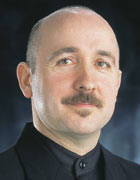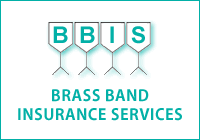Masterclass number 2 - by Roger Webster
17-Nov-2004Roger looks at the somewhat neglected art of "warming up".
 Most people have some working knowledge of 'warm-ups'. Many have a successful system in place; many however, do not. Without going into specifics about my own system of warming up, I have tried below to explain the process and its undoubted benefits. Remember the warm-up is there to serve you (not the other way around) … to take you to your daily operating standard, allowing you to progress into practice or performance 'fully functioning'.
Most people have some working knowledge of 'warm-ups'. Many have a successful system in place; many however, do not. Without going into specifics about my own system of warming up, I have tried below to explain the process and its undoubted benefits. Remember the warm-up is there to serve you (not the other way around) … to take you to your daily operating standard, allowing you to progress into practice or performance 'fully functioning'.
Pre Warm-up
At this stage, there is a need to recognise the complex functional centrality of breathing as the very medium through which proper musical and technical control of the instrument is achieved; and by which acceptable musical sounds are produced and sustained.
This requires a considerable shift of thinking about the role and nature of breathing in relation to the playing of a wind instrument, certainly within the brass band world, and in many cases, the wider brass wind instrument fraternity. There are a number of common and widespread misconceptions amongst musicians such as the belief that (somehow) the diaphragm controls such aspects of brass playing as control, range, and stamina. On the basis of such a belief, generations of players have pursued some form of unattainable diaphragmatic 'nirvana' in which they have achieved complete mastery over the function of the diaphragm that it has propelled them to near virtuosity. This is all the more remarkable given that it is clear that the diaphragm is a reactive rather than proactive muscle which merely returns to its original position following inspiration of air via a passive disposition to do so.
"The diaphragm cannot assist expiration. It is purely an inspiratory muscle. During a forced expiration, the anterior abdominal wall muscles are active, in addition to the intercostals muscles".
Therefore, the pre-warm up stage should more correctly be based on the player achieving a level of readiness, both physically and mentally, to proceed to the next and main stage of warming up. Pre warm-up, therefore, should be based upon an amalgam of physiological and psychological principles that reflect the possibility of achieving:
a) Cognitive awareness of the breathing process
b) Appropriate physical control of both maintaining and monitoring performance-related levels of inspiration and expiration, as well maintaining optimal levels of homeostatic function.
c) Physiological and psychological preparation.
The air supply is the lifeblood of a brass wind instrument. Control over both the quality and quantity is essential.
Here are a few ideas for working with the air supply PRIOR to beginning work with the instrument. This is classed as pre warm-up preparation, and should be done immediately prior to the warm-up. If there is a significant time lag between warm-up and practice or performance, it is advised that the air supply / focus exercises are once again initiated.
Controlled breathing studies can be undertaken either individually, or in classes.
Preparatory breathing exercises are advised to generate a sense of calm and focus. This should help to place the instrumentalist in the correct frame of mind to begin work at the next stage, i.e. practice or performance.
It is quite important that you separate the types of breathing studies, i.e.
1. Preparatory (to initiate the process and promote a feeling of calm)
2. Capacity or volume (to work on maximising lung/air usage)
3. Contextual (quick …snatched, and in-tempo breathing) and smooth slow breaths ( for control and calming ).
To have the best control of your air supply, you must try to stay in good aerobic shape. Try walking or jogging, cycling, swimming or tennis; any aerobic workouts.
Warm-up
The sole purpose of a concise and methodical warm-up is to assist the player / performer in arriving at their 'daily operating standard' (D.O.S). D.O.S. is the term given to the daily normal or expected, technical standard of playing on your chosen instrument.
This means reaching a level of technical, musical and cerebral consistency from where you can work and progress.
This 'warming up' can be achieved by working the various areas of muscular activity in a precise way, aiming for control / management through informed instruction.
Acceptance of good days, bad days, and some in-between is commonplace, due in most part to the lack of understanding of the individual components (muscle groups/areas), that when brought harmoniously together provide the necessary stable platform on which to perform.
As we are all unique individuals, and each day are capable of feeling physically different, so should the warm-up be flexible enough to meet the needs and specific demands of the individual. Some pedagogs (teachers) advocate the use of a set, disciplined routine; with the physical and psychological security it gives them.
Personally, I find routine in the area of pre-practice/performance preparation unnecessary, and perhaps even a hindrance (yet for the young or more elementary level students, routine can be the only way to ensure a full warm-up is achieved). What is important is a thorough understanding and method of warm up techniques, combined with the knowledge that whatever happens, however you feel (physically), you have enough understanding of the physiology needed in performance to survive. Psychological strength comes in part from the knowledge that your performance can proceed to a regular and acceptable standard, part due to a well-constructed and methodical warm up. 'I feel tired if I do a warm up before rehearsal', or 'warm-ups are boring' are popular comments from the un-enlightened. A warm up method followed without adequate knowledge of the why, what and hows will prove at the least ineffective and at worst detrimental.
In the initial stages of developing your personal warm-up, it is vital that you fully understand the 'why, what and how' ….why warm up?….what muscles?….how to perform each exercise? This (at least for the less advanced player) is best done with the assistance of a teacher or colleague.
It is imperative that from the initial stages of the warm up, musicality must not be neglected or ignored. The performer is preparing for a musical act, therefore all studies, however basic and simple they may appear must be approached musically. 'All roads lead to performance'….the musician's ultimate goal.
Do not attempt to enter into a warm-up or practice session unless you are in the correct mindset to do so. Calm, relaxed and receptive as opposed to angry, frustrated or impatient.
Be organised. Structure, method, purpose. Controlled respiratory function exercises will assist in this goal.
The warm-up is to aid the performer…it is not a chore…use it as an ally.
THE PRIMARY PURPOSE OF THE WARM UP IS TO PREPARE THE VARIOUS MUSCLES USED IN PERFORMANCE SO AS TO ACHIEVE MAXIMUM CONTROL AND USAGE. IT ALSO SERVES AS A METHOD FOR ARRIVING AT A STANDARDISED LEVEL OF PERFORMANCE … YOUR 'DAILY OPERATING STANDARD'.
Lack of adequate preparation could lead to premature muscle fatigue or damage, as could poorly constructed warm-ups or those executed without full knowledge or understanding.
Be aware of any peculiarities in your playing physiology, i.e. posture, facial contortions, hand/arm positions etc.
Regular use of muscles in a positive or negative way can lead to positive or negative results. Muscles, misused repeatedly will 'remember' and replicate the faulty use, just as they would 'remember' and replicate good usage. Practice in front of a mirror is most definitely advised to avoid any unnecessary complications.
Keep it simple, make it easy.
N.B. A well-constructed warm-up will enable the player to operate (play) all things within their musical and technical limits at any one particular time. This in turn will allow them to push limits and therefore improve their overall standard.
Do not neglect your warm-up….it is there to help you.
© Dr Roger B Webster















